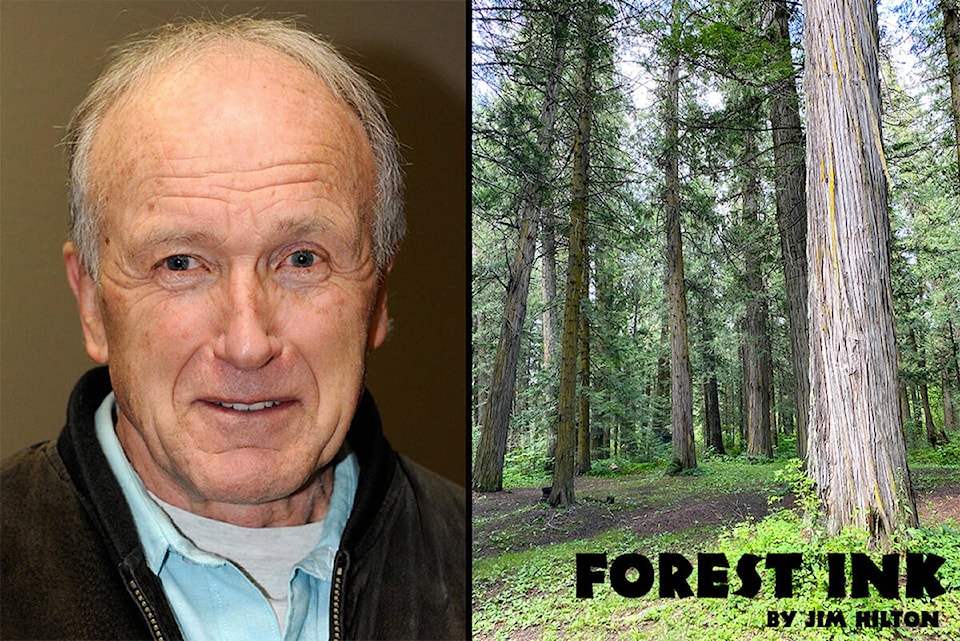It was news to me that on Jan. 16 of this year Andrew Mercier was appointed to the new position of Minister of State for Sustainable Forestry Innovation.
As described on the government website, Mercier will assist Minister of Forests Bruce Rolston with some critical issues in the province’s forest industry.
As described in the news bulletin, recent changes to the Interior Appraisal Manual, effective April 1, 2024, have increased flexibility and established pricing policy for forestry operations and First Nations wanting to salvage wildfire-damaged timber in B.C.
“Salvage allows for quicker reforestation efforts and land recovery after wildfires. The updated pricing guidelines better reflect the price of wildfire-damaged wood in government’s stumpage fees and in the associated costs of salvage logging, making it more economic for businesses to salvage damaged wood.”
Some of the salvage will probably go to the pulp and paper industry which has always used wood considered to be waste (sawdust, shavings, chips and damaged wood) – to make household items such as paper, packaging and tissue paper.
“In response to the 2023 wildfires, salvage cutting permits have been issued for almost 1.4 million cubic metres of volume – equivalent to about 28,000 logging truck loads of wildfire-damaged wood recovered,” noted the news bulletin.
“The province has also convened a wildfire salvage leadership committee, bringing together specialists across government, the forestry sector and the First Nations Forestry Council.”
The committee has developed key recommendations and set targets to improve the salvage of wildfire-damaged timber following wildfires and is tasked with developing actions, overseeing their implementation, measuring and reporting on salvage progress.
A wildfire salvage guidebook is under development that will help guide people to better respond and recover from wildfires. Some interesting facts were also listed.
Initial estimates show 12 to 15 per cent of wildfire-damaged areas from 2023 wildfires are available to salvage due to considerations, such as accessibility, damage, burn severity, retention areas and cultural values.
On Feb. 26, 2024, the Ministry of Forests updated its forest cover inventory maps to reflect 2023 fire perimeters, enabling more accurate and faster salvage planning.
All of these changes will be welcome news for people impacted by the Hell Raving Creek wildfire, south of Tatla Lake, that started in early May last year in the Eniyud Community Forest (ECF).
Mike Tomlinson, forestry manager for the ECF, has put together the following information in a community bulletin: “Middle Lake Fire Salvage Harvesting in the ECF is gearing up to initiate salvage and rehabilitation efforts within the aftermath of the wildfire. Given the challenging terrain and limited infrastructure in the valley, the salvage harvesting operation will be cautiously conducted, covering less than three per cent of the burnt area.
“We’ll be focusing our efforts on slopes where safe operations are feasible. This salvage initiative marks the first step outlined in the Path to Rehabilitation document, which has been shared with the community and is available on our website.
“Focused harvesting of dead fibre remains a guiding principle of the community forest, to maximize recovery and minimize the need for harvesting green timber whenever possible.”
Don’t miss out on reading the latest local, provincial and national news offered at the Williams Lake Tribune. Sign up for our free newsletter here.
